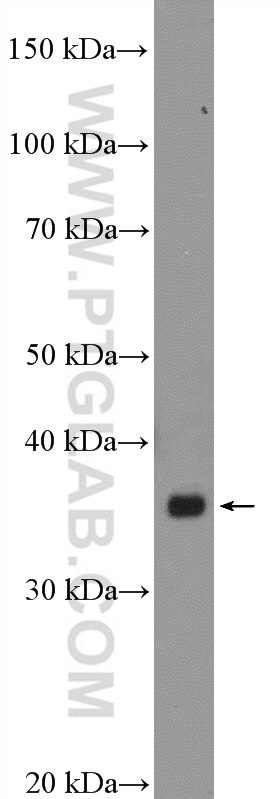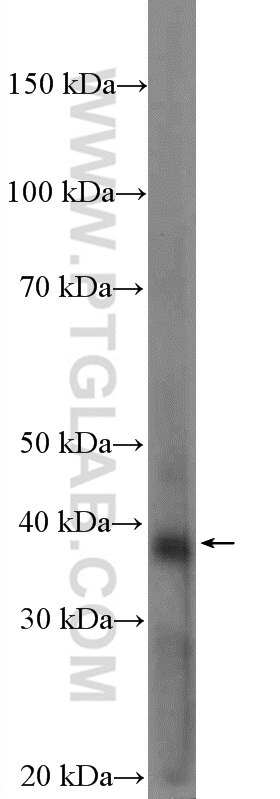BTN3A2 Polyklonaler Antikörper
BTN3A2 Polyklonal Antikörper für WB, ELISA
Wirt / Isotyp
Kaninchen / IgG
Getestete Reaktivität
human, Maus
Anwendung
WB, ELISA
Konjugation
Unkonjugiert
Kat-Nr. : 15148-1-AP
Synonyme
Geprüfte Anwendungen
| Erfolgreiche Detektion in WB | SKOV-3-Zellen |
Empfohlene Verdünnung
| Anwendung | Verdünnung |
|---|---|
| Western Blot (WB) | WB : 1:200-1:1000 |
| It is recommended that this reagent should be titrated in each testing system to obtain optimal results. | |
| Sample-dependent, check data in validation data gallery | |
Produktinformation
15148-1-AP bindet in WB, ELISA BTN3A2 und zeigt Reaktivität mit human, Maus
| Getestete Reaktivität | human, Maus |
| Wirt / Isotyp | Kaninchen / IgG |
| Klonalität | Polyklonal |
| Typ | Antikörper |
| Immunogen | BTN3A2 fusion protein Ag2212 |
| Vollständiger Name | butyrophilin, subfamily 3, member A2 |
| Berechnetes Molekulargewicht | 36 kDa |
| Beobachtetes Molekulargewicht | 36 kDa |
| GenBank-Zugangsnummer | BC020214 |
| Gene symbol | BTN3A2 |
| Gene ID (NCBI) | 11118 |
| Konjugation | Unkonjugiert |
| Form | Liquid |
| Reinigungsmethode | Antigen-Affinitätsreinigung |
| Lagerungspuffer | PBS with 0.02% sodium azide and 50% glycerol |
| Lagerungsbedingungen | Bei -20°C lagern. Nach dem Versand ein Jahr lang stabil Aliquotieren ist bei -20oC Lagerung nicht notwendig. 20ul Größen enthalten 0,1% BSA. |
Hintergrundinformationen
BTN3A2, also named as Butyrophilin subfamily 3 member A2, is a 334 amino acid protein, which contains 1 Ig-like V-type (immunoglobulin-like) domain and belongs to the immunoglobulin superfamily. BTN3A2 plays a role in T-cell responses in the adaptive immune response and inhibits the release of IFNG from activated T-cells. BTN3A2 can form Homodimer and is detected in T-cells and natural killer cells.
Protokolle
| PRODUKTSPEZIFISCHE PROTOKOLLE | |
|---|---|
| WB protocol for BTN3A2 antibody 15148-1-AP | Protokoll herunterladen |
| STANDARD-PROTOKOLLE | |
|---|---|
| Klicken Sie hier, um unsere Standardprotokolle anzuzeigen |



